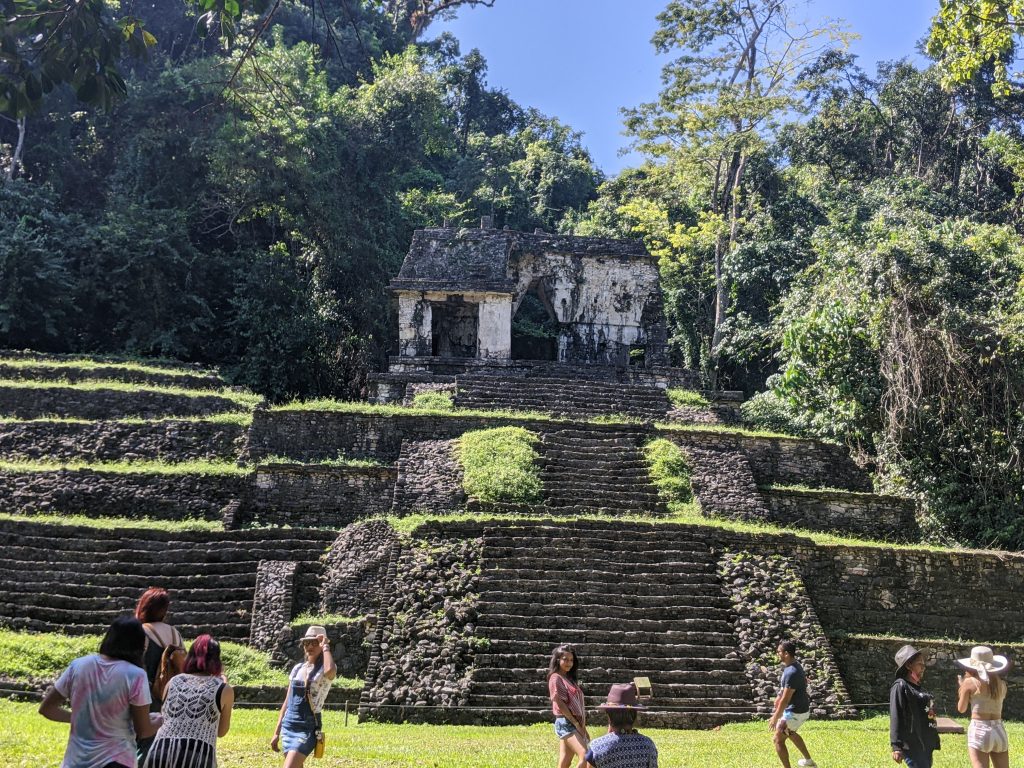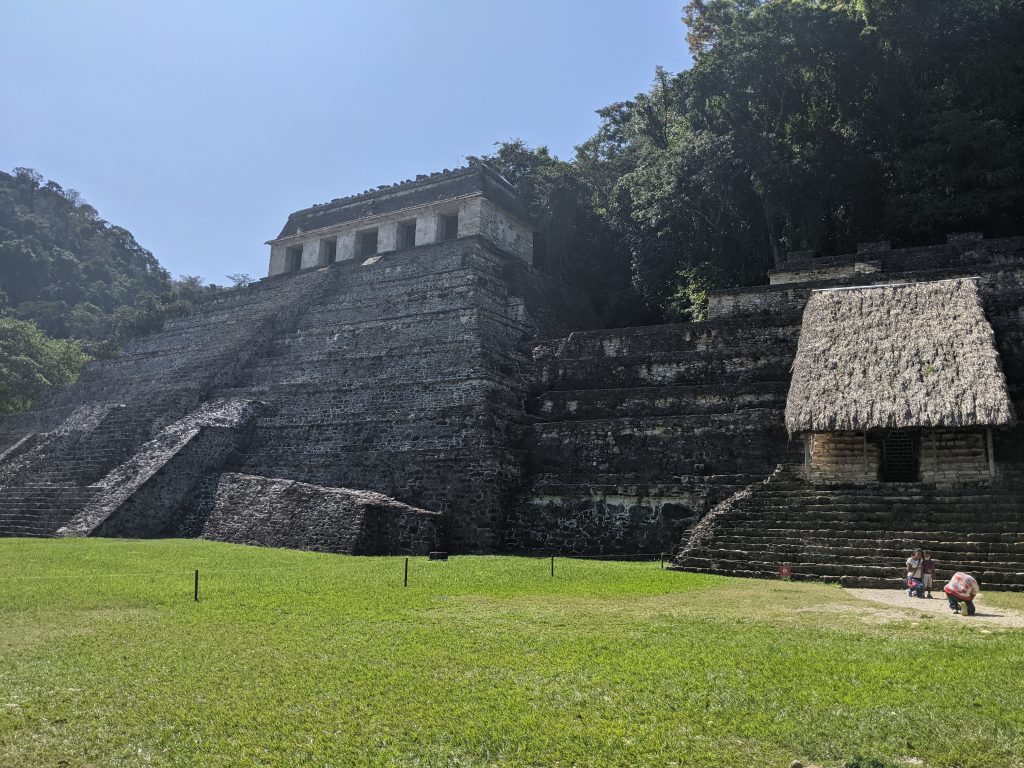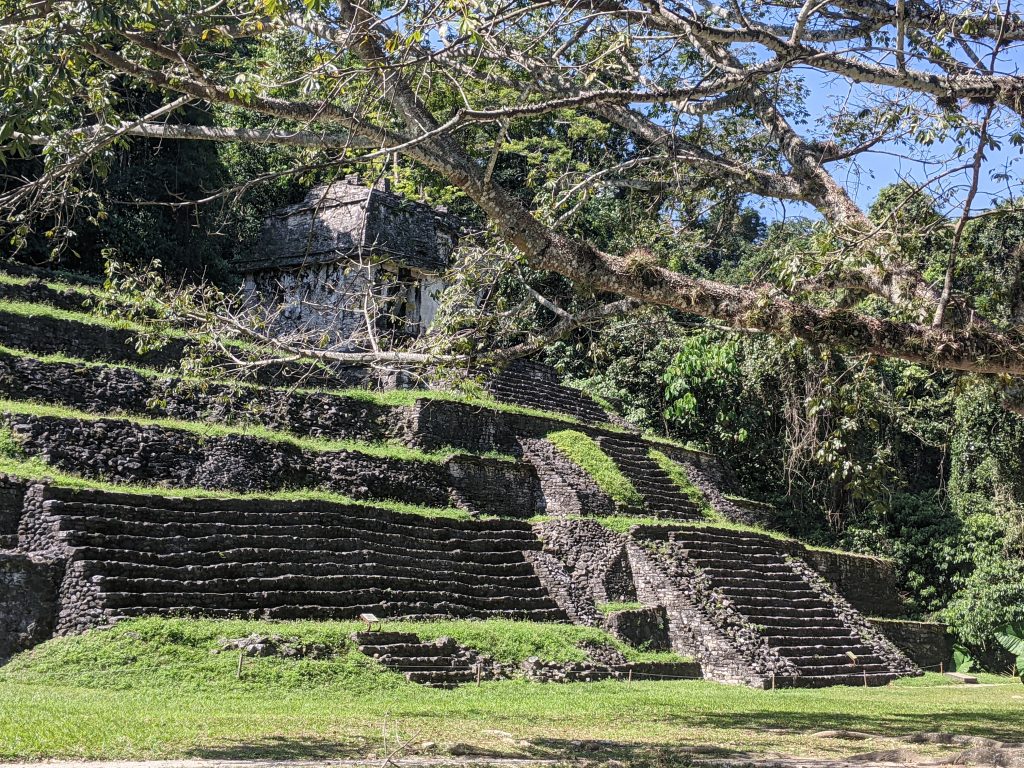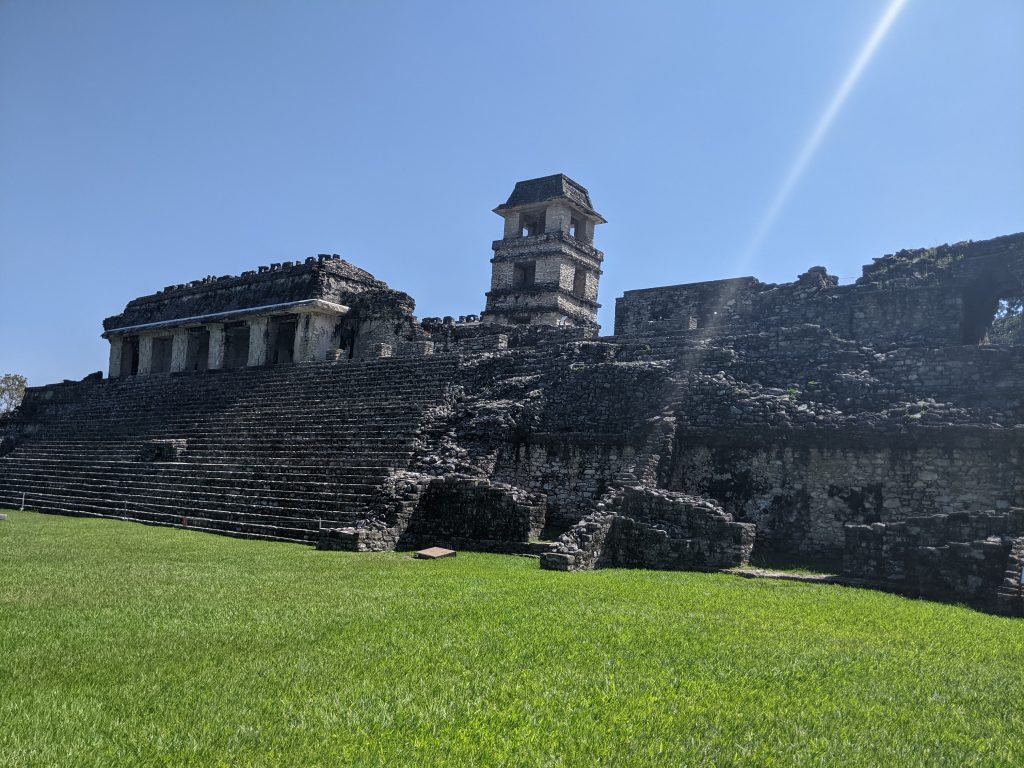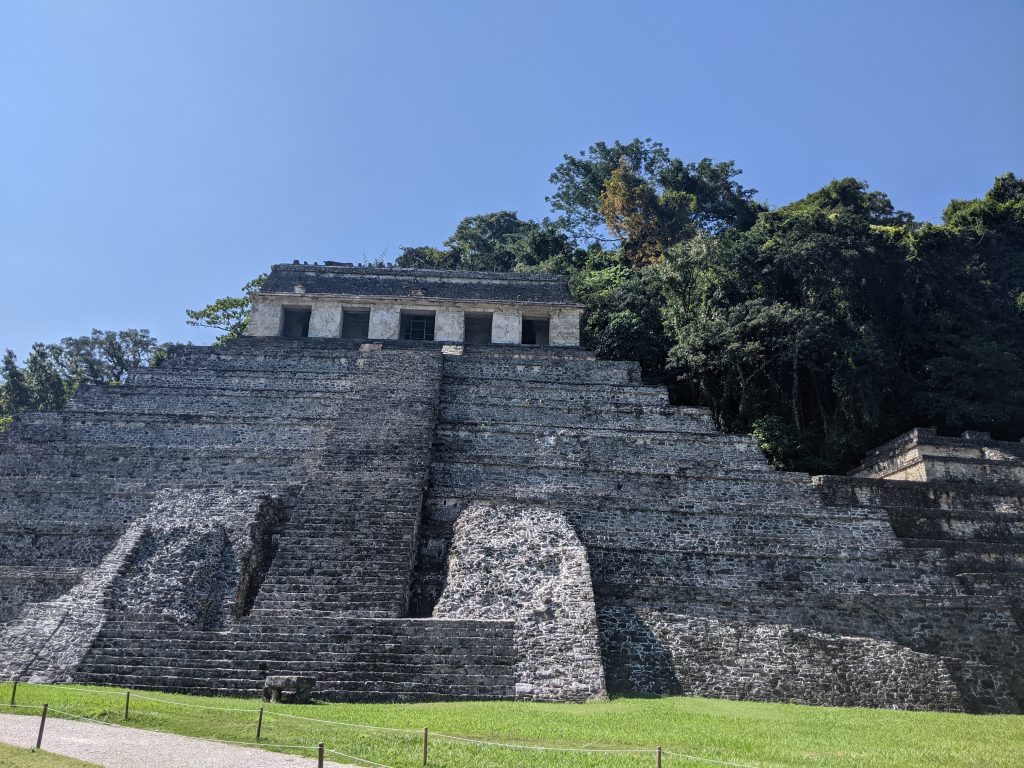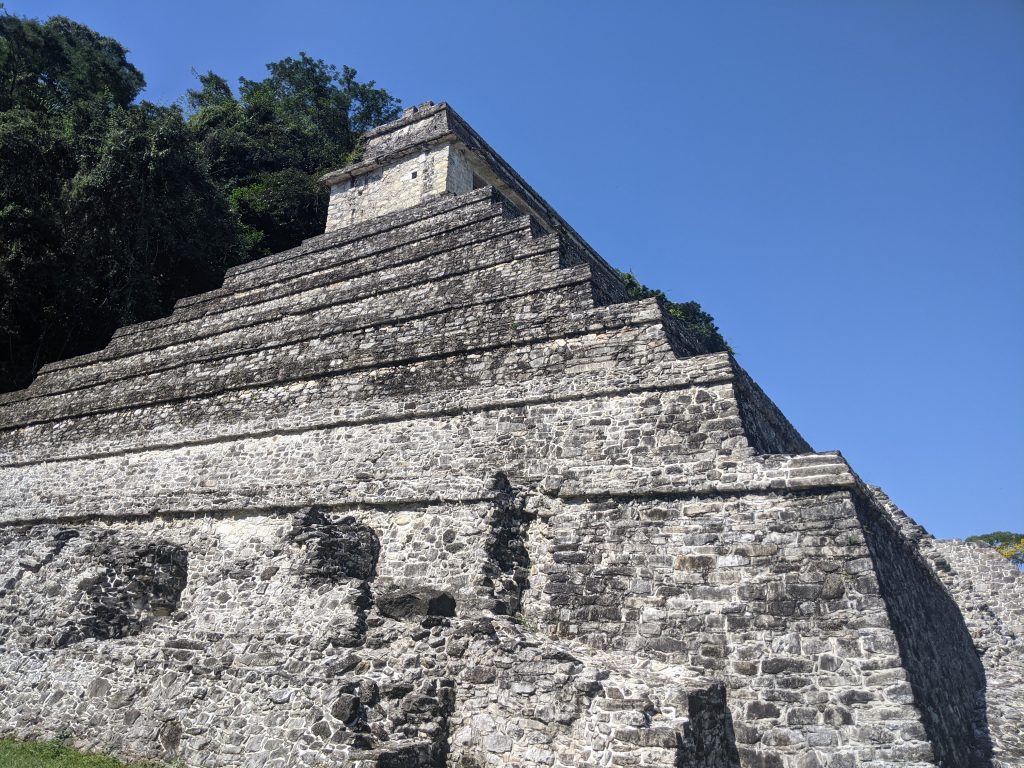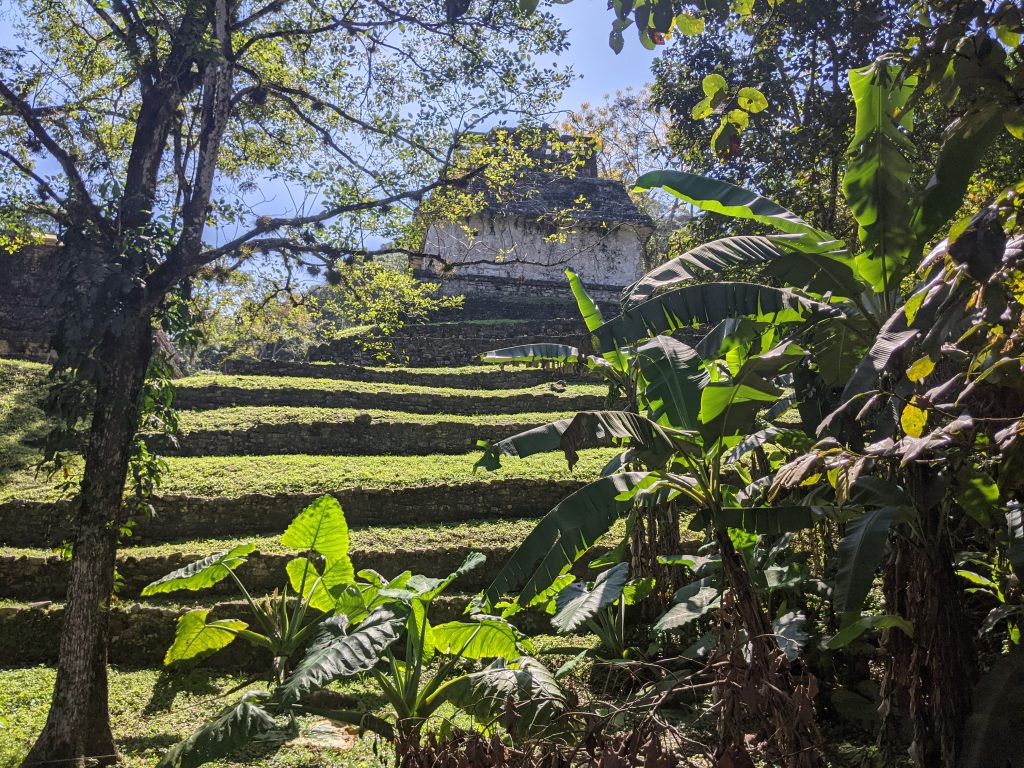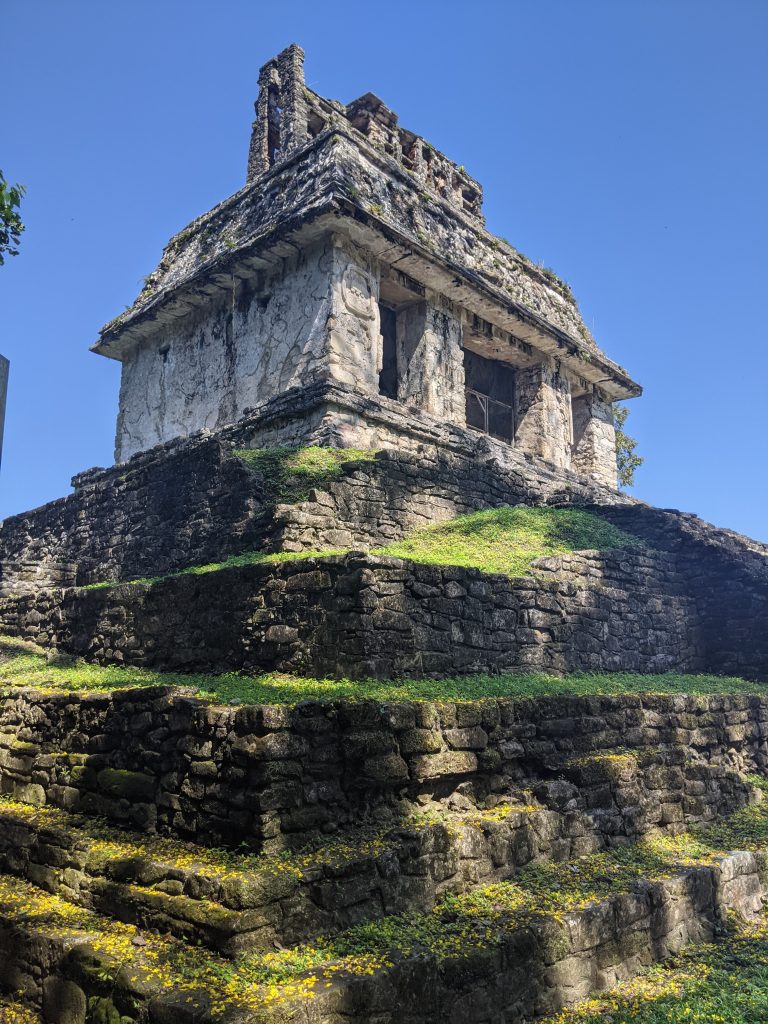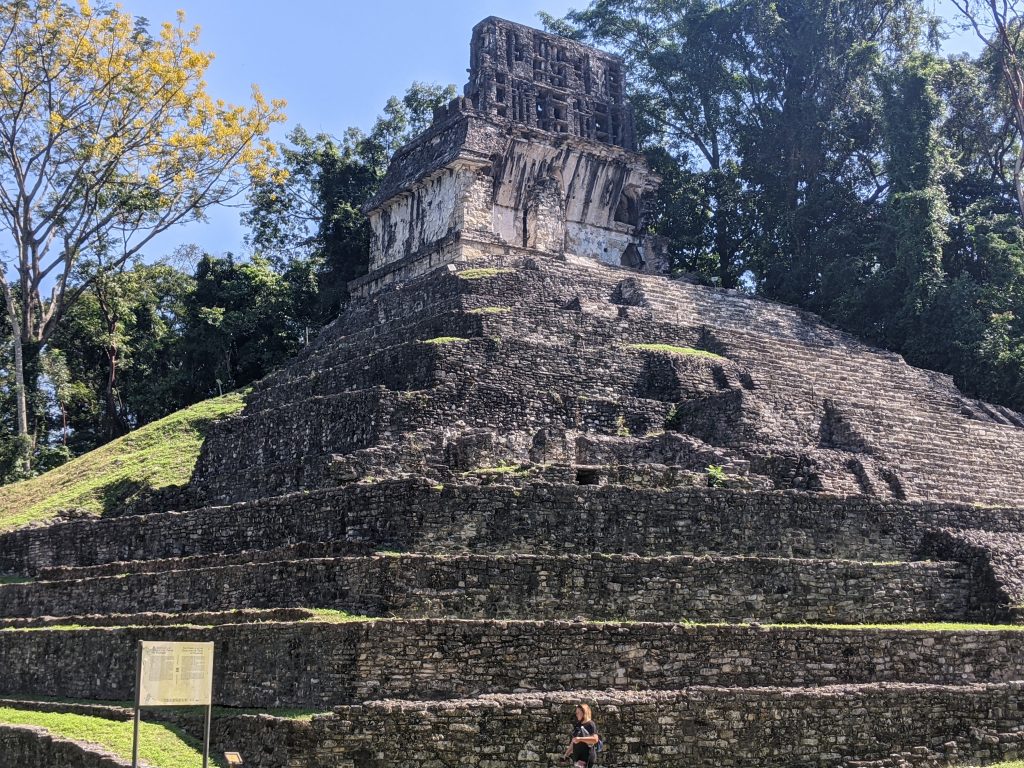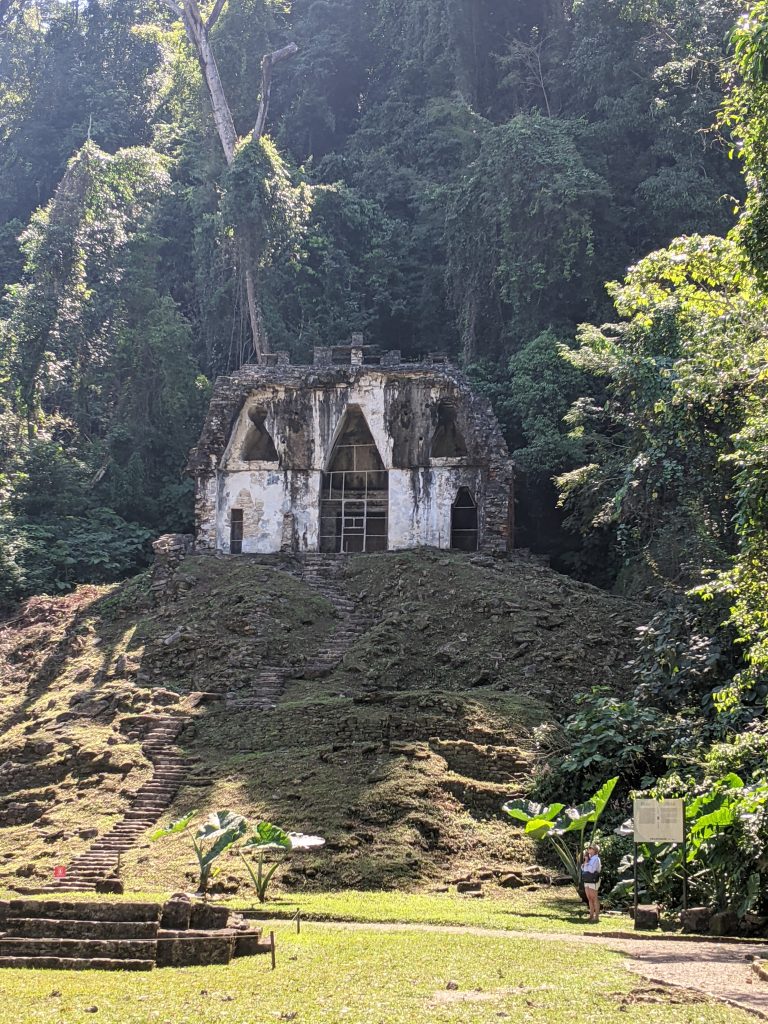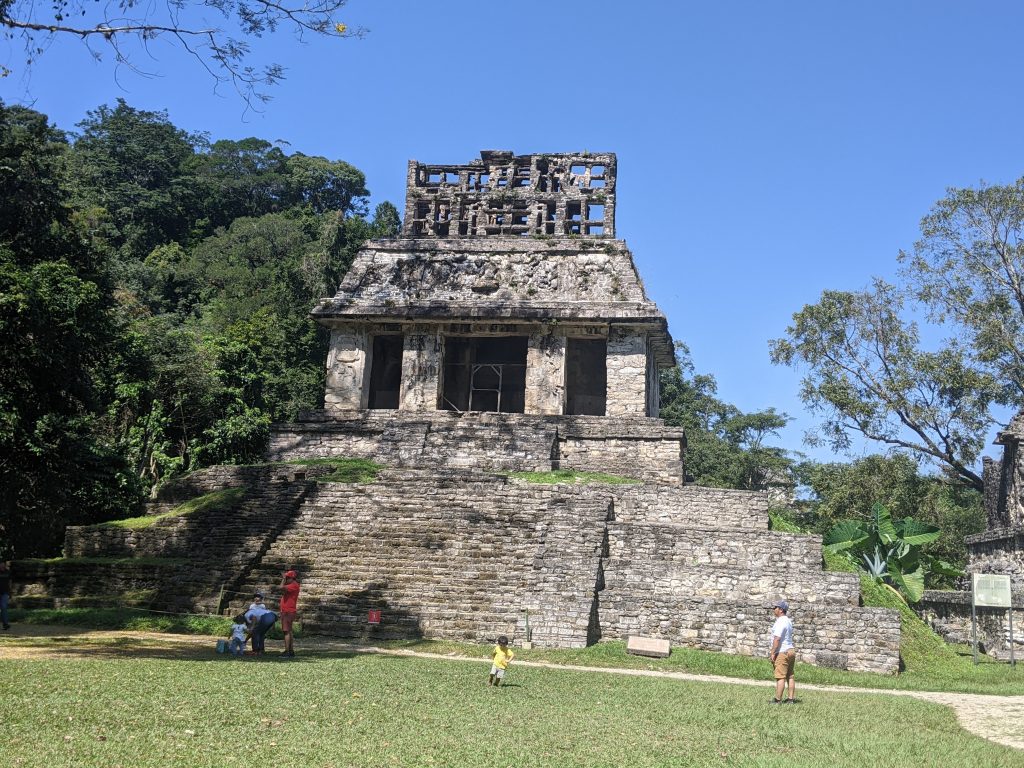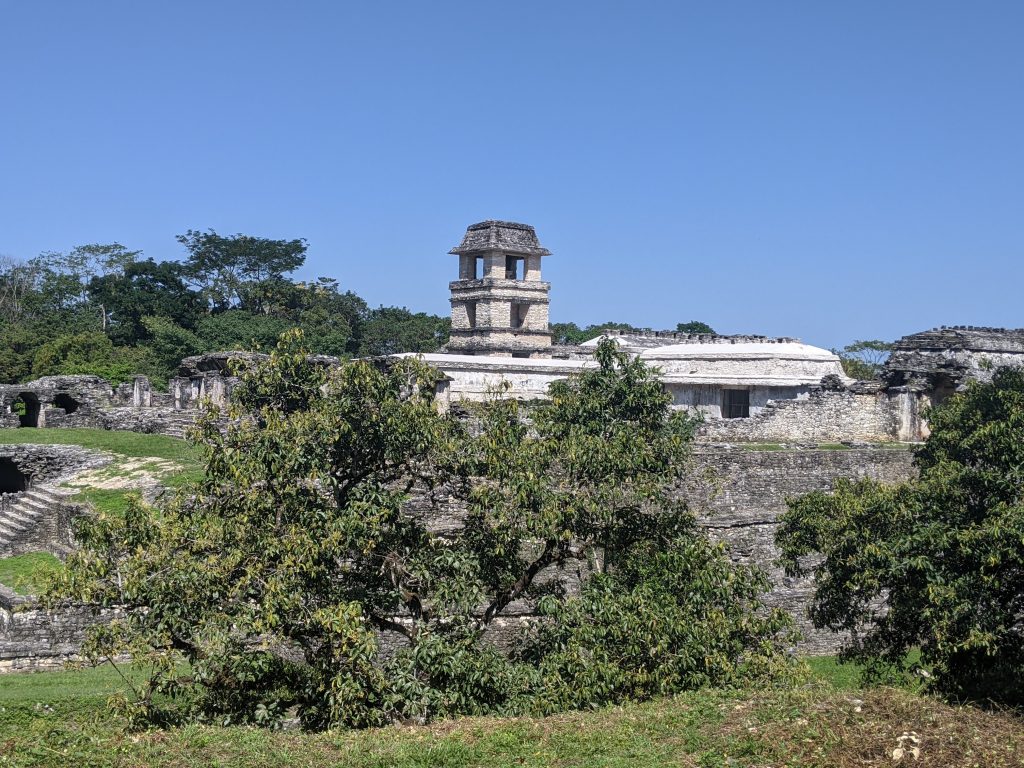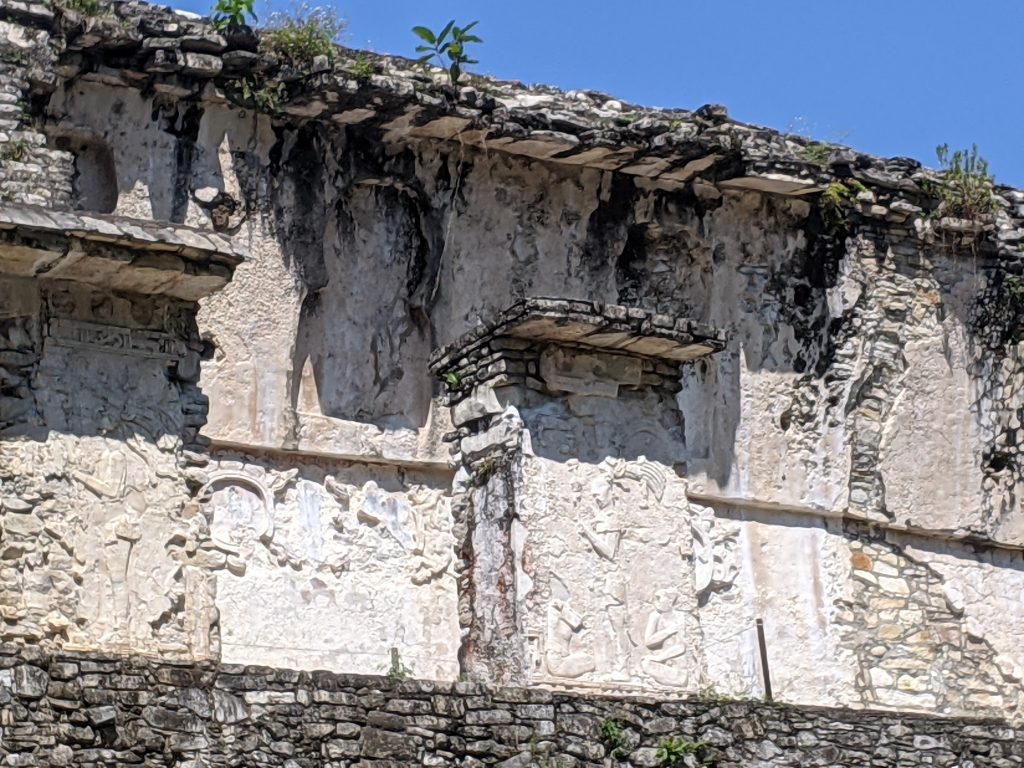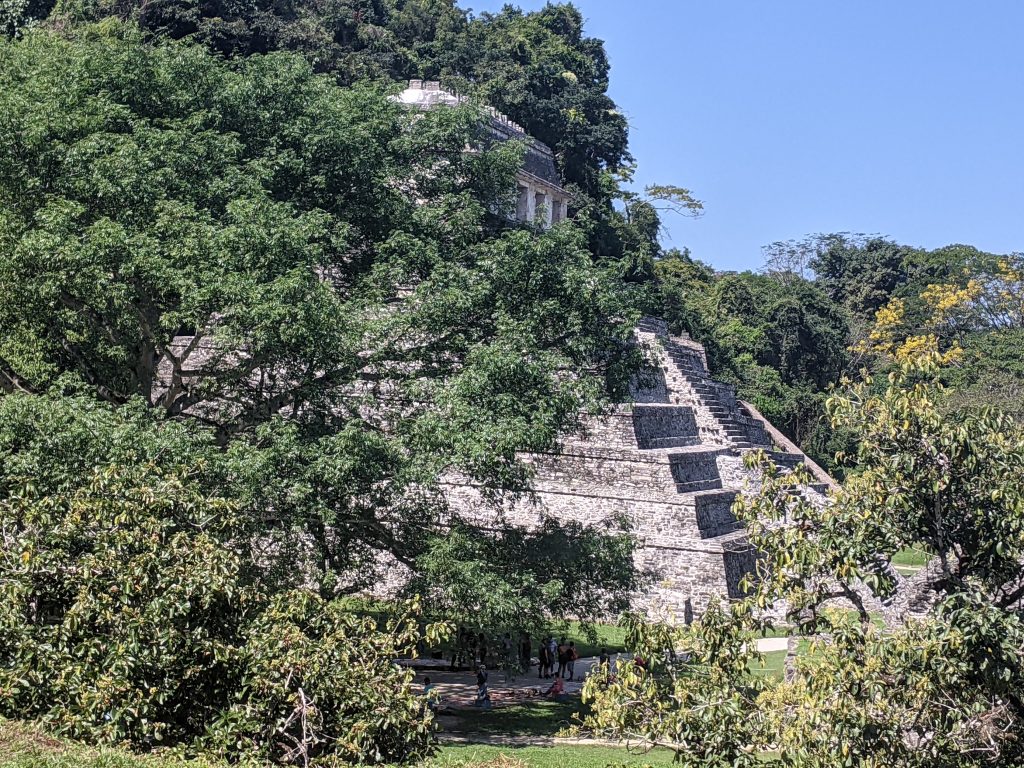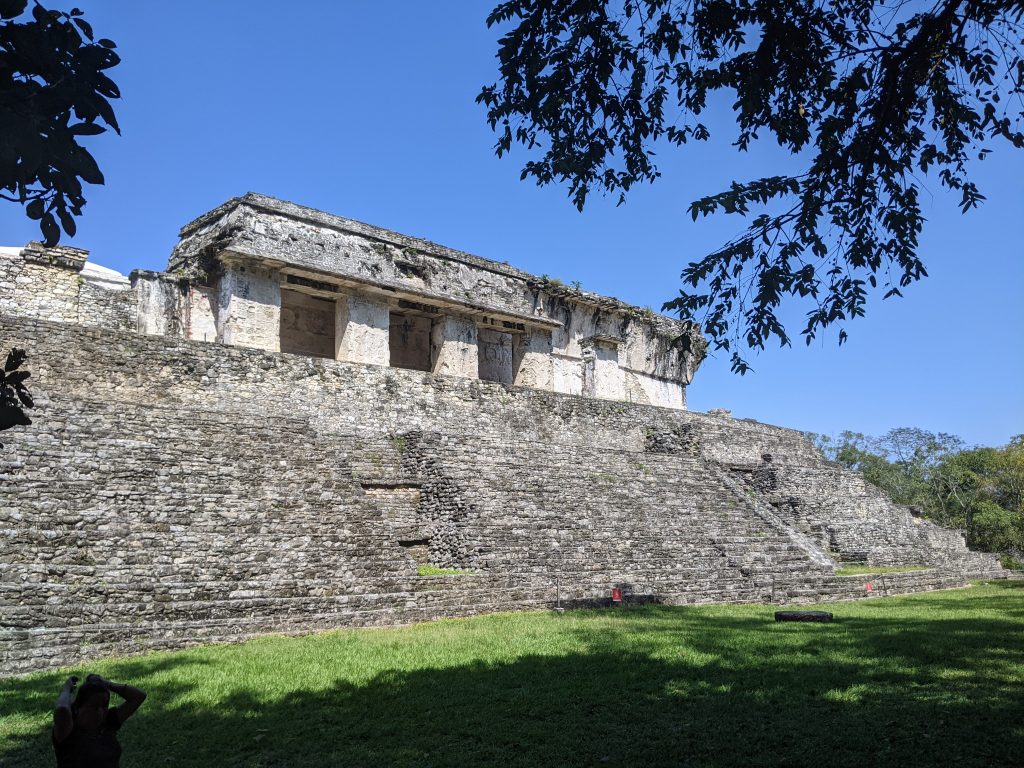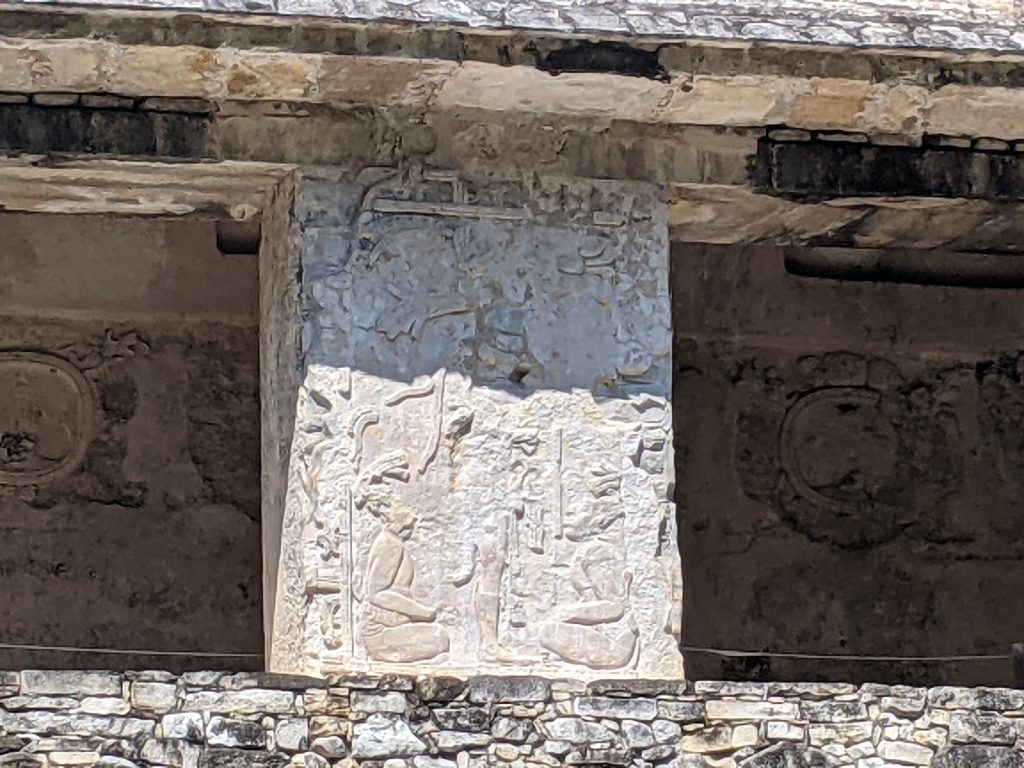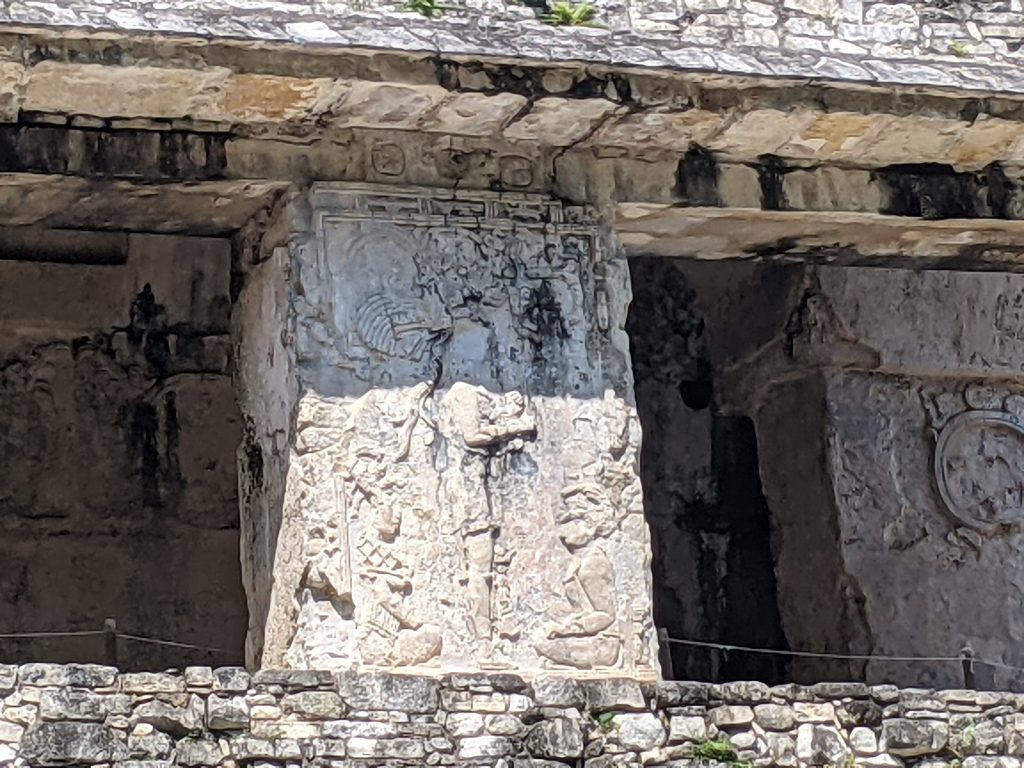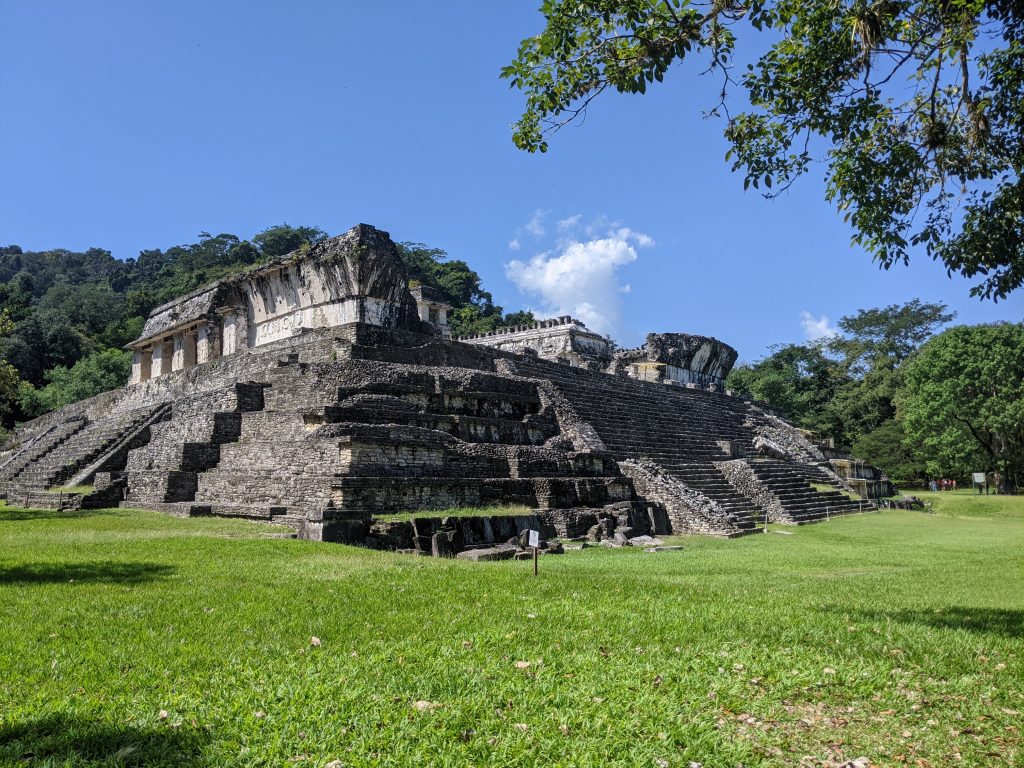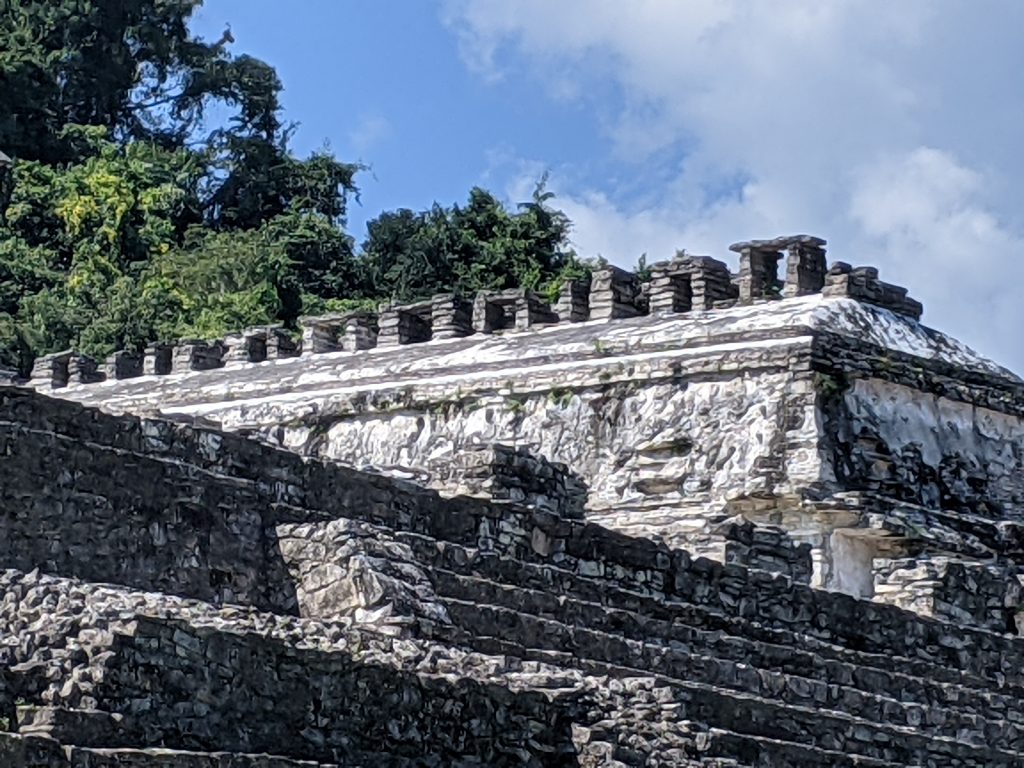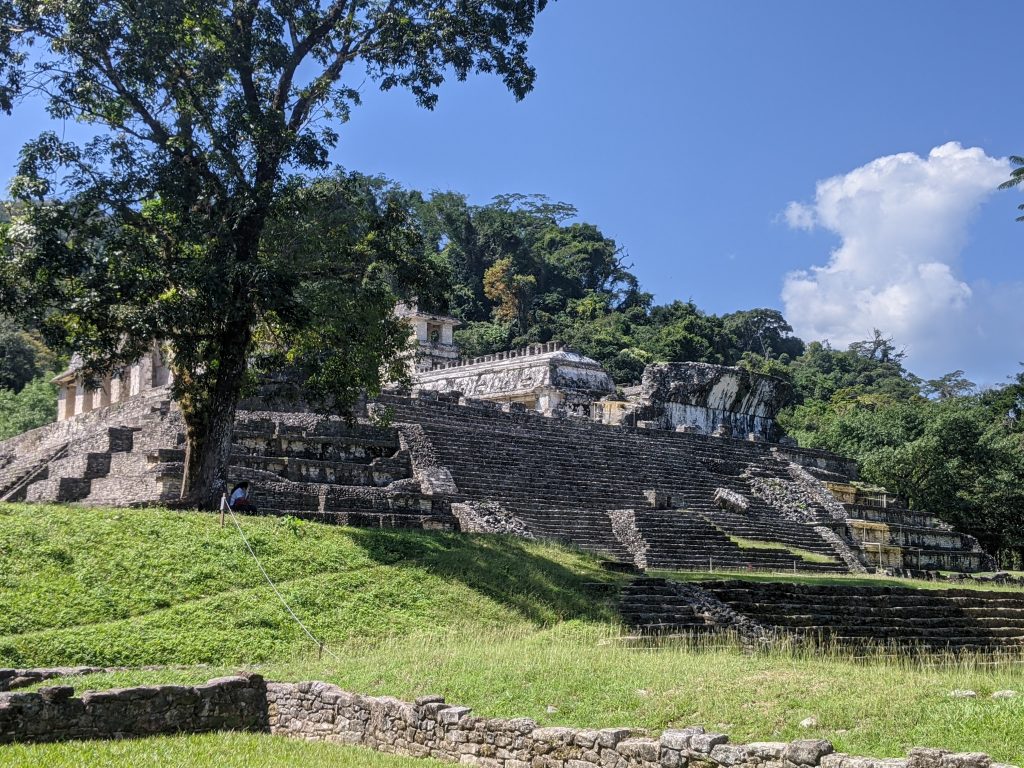My second stop on the way from Playa del Carmen to San Cristobal was the small city of Palenque which is very close to the Mayan ruins of the same name. It was an enchanting place as a score of various ruins of diverse sizes and shapes were set among various levels of the foothills of a small mountain range.
History
The best summary I read on Palenque’s importance came from this blog site, which I’ve copied below: https://everywhereish.com/palenque-ruins-chiapas-mexico/.
She really did her homework:
- Palenque once reigned over an area spanning five countries. Back in the day, Palenque ruled over an area covering Belize, Honduras, Guatemala, and even El Salvador.
- Less than 10% of the Palenque ruins have been excavated. Despite being significantly smaller than sites like Chichen Itzá and Tikal, what we see at Palenque isn’t even a tenth of what this capital city once was. So far, somewhere around 1,400 buildings have been documented.
- Palenque is one of the most important Mayan sites in Mexico. Thanks to a series of rulers stretching from Pakal the great in 603 to K’inch Akul Mo’ Naab in 736, the temples of Palenque are decorated with hieroglyphic texts that illustrate the history of the city’s rulers and their religious beliefs in unprecedented detail. It’s because of those texts that archeologists and historians claim that Palenque isn’t just the most important Mayan site in Mexico, but one of the most important Mayan ruins in all of Mesoamerica.
- No one seems to agree on when Palenque was founded. At a minimum, archeologists tend to generally agree that Palenque was established during the Classic period– so, sometime from either 100 A.D. or 300 A.D. until sometime around 600 or 650 A.D., depending on who you ask. At any rate, the general consensus seems to be that Palenque was founded sometime between 100 A.D. and 400 A.D.
- Palenque peaked from 600 A.D. to 900 A.D. How do we know? Excellent record keeping. In the early seventh century, Palenque’s rulers started commissioning those extensive epigraphic records of the city’s growth. From this, the experts tell us, we know that some of Palenque’s most significant temples (like the Temple of Inscriptions) were constructed during the 7th and 8th centuries.
- The Palenque ruins contain multiple tombs. In 1952, Mexican archeologist Alberto Ruz Lhuillier followed an obstructed stairway leading down to 80 feet below the Temple of Inscriptions, where he found the tomb of Pakal the Great— in a room that had then been sealed for over 1,000 years. Today, we know that Pakal built the Temple of Inscriptions specifically to house his eventual tomb, which you can now see in the on-site museum. While other tombs have been discovered in Palenque, Pakal’s is the only one to be put on display.
- Palenque had the first pressurized water system in the Americas. The Palenque residents took advantage of their proximity to the Usumacinta River not just to use it as a trade route, but to develop an advanced canal system that supplied water throughout the city. Most recently, archeologists have discovered canals running beneath the Tomb of Pakal.
Pictures
There was a lot to see at the site, so I hope you enjoy the many pictures I took as I wandered amongst the ruins.
